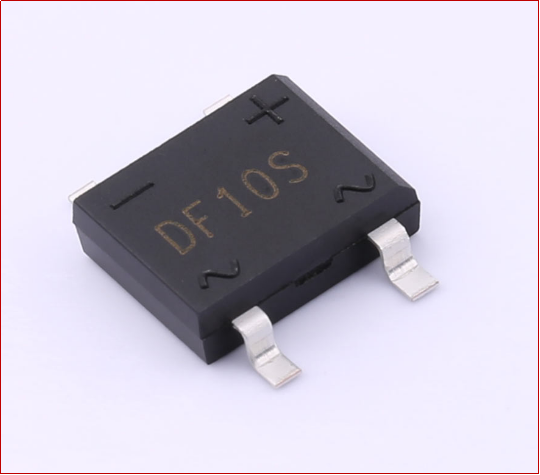Service hotline
+86 0755-83044319
release time:2024-08-28Author source:SlkorBrowse:6396
Welcome to our detailed guide on Rectifier Bridges. This article is tailored for procurement and engineering teams in consumer electronics companies. Here, we delve into what a Rectifier Bridge is, its development history, characteristics, parameters, roles, applications, and leading manufacturers in the industry.

What is a Rectifier Bridge?
ARectifier Bridge is a type of electrical circuit that converts alternating current (AC) to direct current (DC). It comprises four diodes arranged in a bridge configuration to ensure that current flows in one direction, irrespective of the AC cycle. This setup provides full-wave rectification, improving efficiency and reducing ripple in the output DC.
In a Rectifier Bridge, diodes are strategically positioned to rectify both halves of the AC cycle, which minimizes the need for additional components. This configuration is commonly used in power supplies to provide stable DC voltage.
The Rectifier Bridge has evolved significantly since its inception. Initially, rectification was performed using vacuum tubes, but with the advancement of semiconductor technology, the Rectifier Bridge became a standard component. The development of silicon diodes and improvements in diode technology have enhanced the efficiency and reliability of Rectifier Bridges over the decades.
Early rectifiers used in the 20th century were bulky and less efficient. The transition to semiconductor diodes marked a significant milestone, leading to the compact and efficient Rectifier Bridges we use today.
Understanding the characteristics of a Rectifier Bridge is essential for selecting the appropriate component for your application. Key characteristics include:
These characteristics help in evaluating the Rectifier Bridge for various electronic circuits and applications.
When selecting a Rectifier Bridge, consider the following parameters:
These parameters are crucial for ensuring that the Rectifier Bridge operates reliably within your system's specifications.
Rectifier Bridges serve several critical functions in electronic circuits:
These roles demonstrate the versatility and importance of Rectifier Bridges in electronic design and application.
Rectifier Bridges are used in a wide array of applications:
These applications highlight the broad utility of Rectifier Bridges in modern electronics.
Several leading manufacturers produce high-quality Rectifier Bridges. Some prominent names in the industry include:
These companies are known for their reliable and efficient Rectifier Bridges, catering to various electronic needs. For more detailed information, visit Omega Engineering to explore the technical aspects and applications of rectifiers.
In summary, understanding Rectifier Bridges is essential for procurement and engineering teams in the consumer electronics sector. From their development history to their practical applications, characteristics, and key manufacturers, this guide provides a thorough overview. By grasping the fundamentals and roles of Rectifier Bridges, you can make informed decisions for your electronic design and procurement needs.









Site Map | 萨科微 | 金航标 | Slkor | Kinghelm
RU | FR | DE | IT | ES | PT | JA | KO | AR | TR | TH | MS | VI | MG | FA | ZH-TW | HR | BG | SD| GD | SN | SM | PS | LB | KY | KU | HAW | CO | AM | UZ | TG | SU | ST | ML | KK | NY | ZU | YO | TE | TA | SO| PA| NE | MN | MI | LA | LO | KM | KN
| JW | IG | HMN | HA | EO | CEB | BS | BN | UR | HT | KA | EU | AZ | HY | YI |MK | IS | BE | CY | GA | SW | SV | AF | FA | TR | TH | MT | HU | GL | ET | NL | DA | CS | FI | EL | HI | NO | PL | RO | CA | TL | IW | LV | ID | LT | SR | SQ | SL | UK
Copyright ©2015-2025 Shenzhen Slkor Micro Semicon Co., Ltd